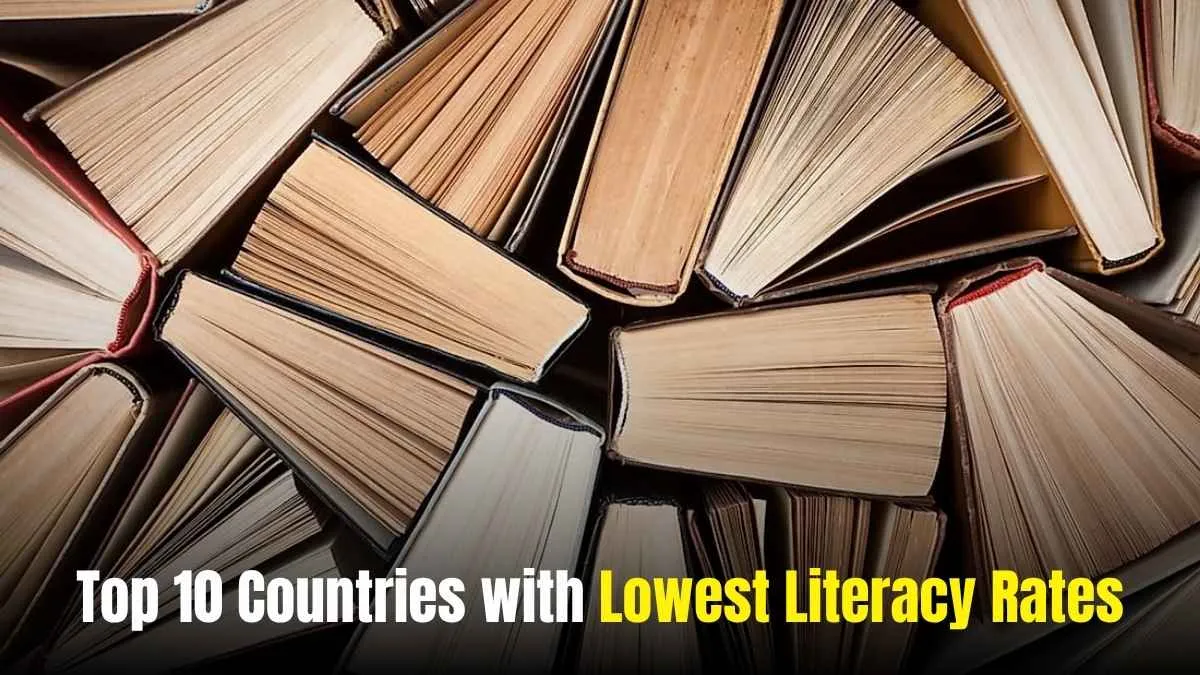Literacy, or being able to read and write, is still not a human right for all of the world, but it has come a long way in the last 100 years. Some countries don't realize, that an uneducated country means that you and your underdeveloped societies are going to be left behind by countries because of economic dilemas, war and other things. One of the factors that have contributed to the marginalization is the low levels of literacy.
What is Literacy Rate?
Literacy, or the capacity to read and write, is essential for both societal progress and personal empowerment. A lack of these talents drastically restricts one's prospects, but having them greatly expands professional opportunities and leads to skilled, high-paying professions. Examining the global literacy scene reveals significant inequalities, highlighting the ongoing need to guarantee fair access to high-quality education everywhere.
Top 10 Countries with Lowest Literacy Rates
These countries face major educational challenges due to factors like poverty, conflict, limited infrastructure, and lack of access to schooling, resulting in low literacy levels among their populations.
| Rank | Country | Literacy Rate |
| 1 | Niger | 19.10% |
| 2 | Chad | 27% |
| 3 | Mali | 31% |
| 4 | South Sudan | 34.5% |
| 5 | Afghanistan | 37.3% |
| 6 | Central African Republic | 37.5% |
| 7 | Somalia | 41% |
| 8 | Guinea | 45.3% |
| 9 | Burkina Faso | 46% |
| 10 | Benin | 47% |
Top 10 Countries with Highest Literacy Rates
These countries have achieved near-universal literacy, reflecting strong education systems, consistent government support, and widespread access to quality education.
| Rank | Country | Literacy Rate |
| 1 | Andorra | 100% |
| 2 | Finland | 100% |
| 3 | Liechtenstein | 100% |
| 4 | Luxembourg | 100% |
| 5 | Norway | 100% |
| 6 | North Korea | 100% |
| 7 | Uzbekistan | 100% |
| 8 | Azerbaijan | 100% |
| 9 | Cuba | 100% |
| 10 | Ukraine | 100% |
Why is there such Difference in Literacy Rate
Global literacy rates differ greatly; some nations have almost universal literacy, while others have far lower rates. Such variance is the consequence of a complex interaction between social norms, economic growth, government policies, and the prevalence of instability and conflict.
The huge disparity in literacy rates seen around the world is caused by a number of important factors:
-
Government Policies and Investment: Literacy rates are typically higher in nations that place a high priority on education and devote significant funds to their educational institutions. These policies frequently involve legislation requiring compulsory education and programs designed to increase everyone's access to high-quality education.
-
Economic Development: A country's economic standing has a significant impact on literacy. People from wealthier nations can readily invest in better resources, teacher preparation programs, and educational infrastructure, all of which enhance literacy rates.
-
Social and Cultural Norms: Attitudes regarding education are greatly influenced by societal norms and cultural values, especially for marginalized groups like women and girls. Literacy rates are typically higher in civilizations that place a high emphasis on education and make it available to everyone.
-
Political instability and armed conflicts have the potential to upend educational systems, demolish schools, and uproot communities, which can lead to a decline in school enrollment and literacy rates.
